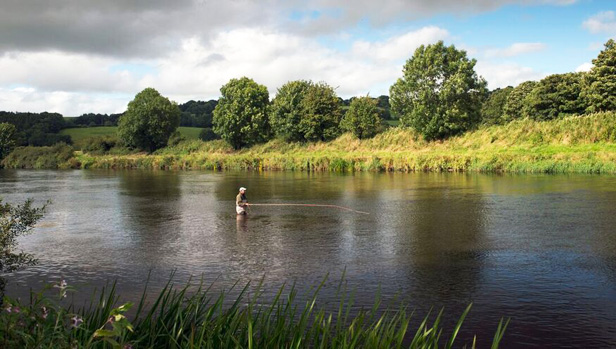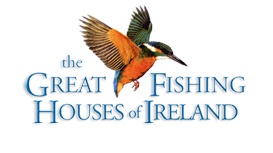

The Rivers
Munster Blackwater
Season
Salmon and Sea-trout: 1 February to 30 September
Brown Trout: 15 February to 30 September
The Munster Blackwater rises in east Co Kerry near the source of the Brown Flesk River and flows for 105 miles east through the counties of Cork and Waterford to the tide at Cappoquin. Its entire catchment is more than 1,200 square miles. It has a long, narrow estuary, some 15 miles long. It dominates the southern province, draining five ranges of mountains, and in time of heavy rainfall the levels can fluctuate wildly by more than 12 feet on the gauge at Careysville. The peaty nature of the terrain in the upper reaches and of some of the tributaries gives the water a pronounced dark colour. It is indeed 'black' water. The geology of the catchment is divided roughly into old red sandstone and limestone and lower limestone shales.
The river is noted for its enormous run of salmon over the years. The average size of the brown trout is rather small and it is not a noted sea-trout fishery. A distinguishing feature of the Blackwater is that it probably hold more species of fish than any other Irish river. It is the only one to have dace, and roach were introduced to Ireland via the Blackwater in the late 1800s.
It is important for salmon anglers to note that the water condition can fall into about four different categories, depending on the amount of colour: in a flood, when the river carries a lot of suspended solids, it will be heavily coloured and unfishable; it is known as 'dark water' when it has a lot of colour but no suspended solids, and then spinning is more likely to succeed; in slightly coloured water a fly, spinner or worm will take fish; it is said that the Blackwater does not run really clear till July and some then maintain that the fly or the natural shrimp give best results for salmon.
The river is characterized by mighty pools, lovely streams, glides and, generally, a good push of water coming through except in very low water.
Careysville Weir, downstream of Fermoy, is one of the dominant features on the river. It controls the run of fish in low, cold water conditions. A lot of fish lie back and refuse to run, but when the water rises, or in high water, they will run the weir. Consequently, fishermen on the river often remark that 'you can get a spring fish at Millstreet on opening day', meaning that there are always fish upstream of Fermoy from early in the season.
Fishing methods
The Blackwater has to be regarded as a great multi-method salmon river. Spinning and fly fishing are allowed on all fisheries, but on some the use of worm and shrimp is prohibited. It is probably true that no one method is completely effective in all water conditions. If there is one method more effective than all the others, it is probably fly fishing. For those who blindly place all their hopes in the natural shrimp, it is well worth noting that it is not always effective and fishermen would be well advised to wait for clear water in July before fishing it.
Tube flies, Esmond Drury trebles or even big single hooks, up to size 4/0, are used for spring fishing.
In summer, smaller flies - size 6 to 12 - are called for. Flies with a touch of yellow or lemon work well and favoured patterns include Lemon and Grey, Garry Dog, Munro Killer, Thunder and Lightning, Curry's Shrimp, Stoat's Tail, Blue Charm, Hairy Mary and Silver Stoat's Tail.
Since this is a river with a lot of steamy water, it is not surprising to find that the spun shrimp is a frequently used method for summer fish, but one that requires correct tackle and not a little skill.
For the spring and back end, large spoons (up to 28 grams), spinners and Devons up to 3 inches are used. Smaller brown-and-gold Devons and Lane minnows are favoured by some in summer.
Excerpts taken from "Trout & Salmon Rivers of Ireland, an angler's guide" by Peter O'Reilly.

